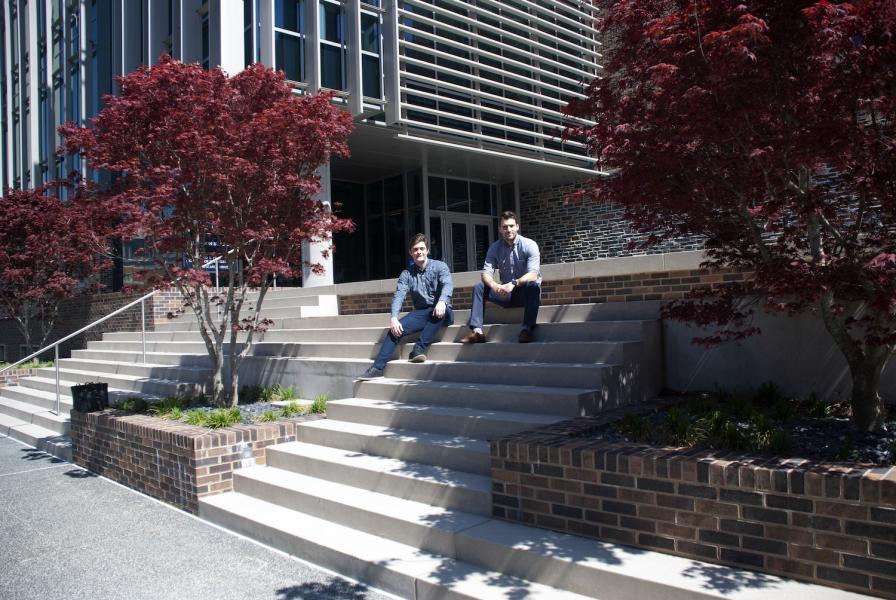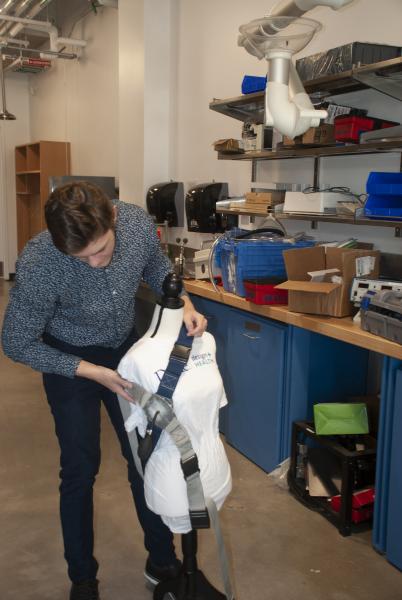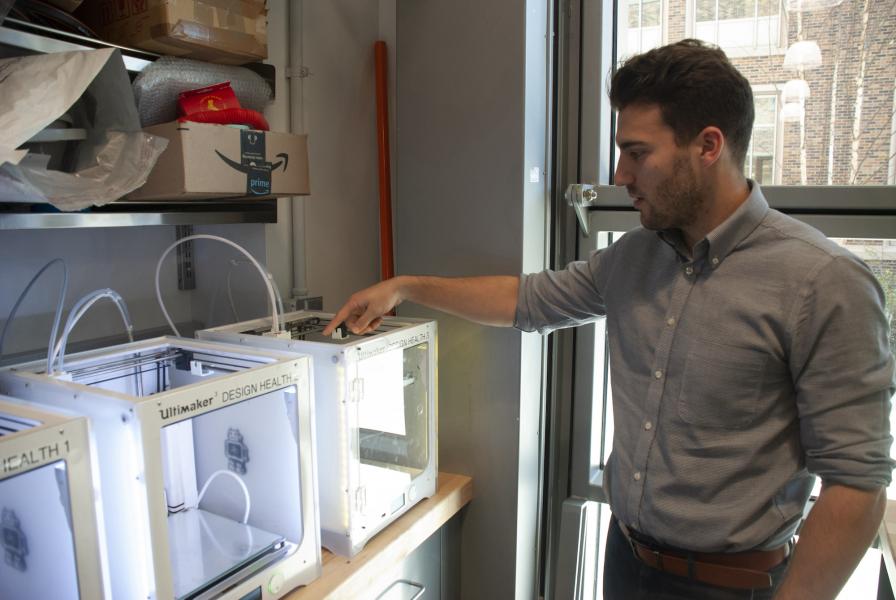Bridging the gap between medicine and engineering

By Brittany Vekstein
Jess Rames and Daniel Cox will start medical residency programs this year with different perspectives, skills, and frameworks, from most medical students.
The two are completing their Doctor of Medicine studies at Duke, but they are also recent graduates of Duke Pratt School of Engineering’s Master of Engineering program. As second year medical students, Rames and Cox decided to pursue the MD/MEng dual degree, a 5-year program that has allowed them to explore their interests in engineering and innovation. They were assisted by Barr-Spach Scholarships, which were created by Duke School of Medicine alumnus, Dr. Maynard Ramsey III, M’69, G’75, to enable medical students to pursue engineering training. Neither Rames nor Cox have undergraduate degrees in engineering but, with a great deal of hard work, they successfully completed the program.
Included among the skills Rames learned during his engineering training was a new approach to complex problem solving. In classes like Design Health, students gain hands-on learning experiences that encourage them to be creative and think outside of the box while learning steps and processes to find practical solutions to problems.
“Engineers have a different way of thinking,” said Rames. “One of the most practical engineering skills I learned was patience with problem solving. You can determine the answer but then there is a better answer and then there is the best answer. This program has helped me look at problems more globally to find solutions.”
engineering skills I learned was patience with problem solving. You can determine the answer but then there is a better answer and then there is the best answer. This program has helped me look at problems more globally to find solutions.”
Another practical skill that the medical students developed in Design Health was working on interdisciplinary teams that included business students, engineers, nurses, medical students and physicians – all with unique backgrounds and points of view. This experience showed them the benefit of tackling problems with teams of people who have not only different knowledge, but also different perspectives and life experiences.
Jess Rames is heading to Mayo Clinic in June to start a six-year residency program in plastic surgery. While interviewing for residency programs, the dual degree was always a topic that faculty around the country wanted to discuss.
“My MD/MEng joint degree helped distinguish my background as a future resident,” shared Rames. “The joint degree is novel to people in medicine and I think it illustrated to interviewers my drive to be a good resident and future innovative leader in the field.”
Daniel Cox will start a 3-year residency program in emergency medicine at Duke University. He ultimately wants to pursue a career in aerospace medicine, a path will help him to engage with big engineering firms in the future.
“I really enjoyed learning from program teammates who worked in industry or came into the program with an engineering background,” said Cox. “Understanding and now being able to speak the engineering language, along with my medical knowledge, will be extremely valuable in dealing with multifaceted and complex situations in emergency medicine.
“Even though the thought of trying something out of your comfort zone, like engineering, seems intimidating as a medical student, I haven’t made a better decision from a graduate education perspective than pursing this dual degree,” said Rames.
Cox added, “Now, with time to reflect, I am so thankful I took the leap to tackle the engineering degree because it changed the outlook I have on both medicine and engineering. During my residency interviews, I was able to talk about this training. I think that interviewers saw that the dual degree had the potential to make me a bridge between doctors with insights on clinical problems and engineers who might develop solutions.”
engineering degree because it changed the outlook I have on both medicine and engineering. During my residency interviews, I was able to talk about this training. I think that interviewers saw that the dual degree had the potential to make me a bridge between doctors with insights on clinical problems and engineers who might develop solutions.”
As the two begin the next chapter in their lives, they do so equipped with a unique skillset and the ability to forge collaborations between engineers and clinicians to drive innovation in healthcare.

